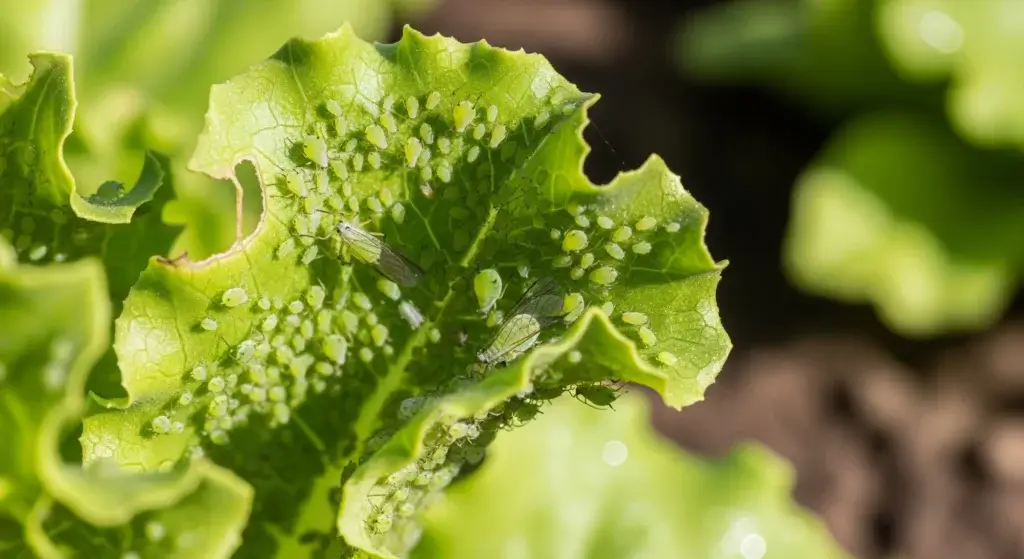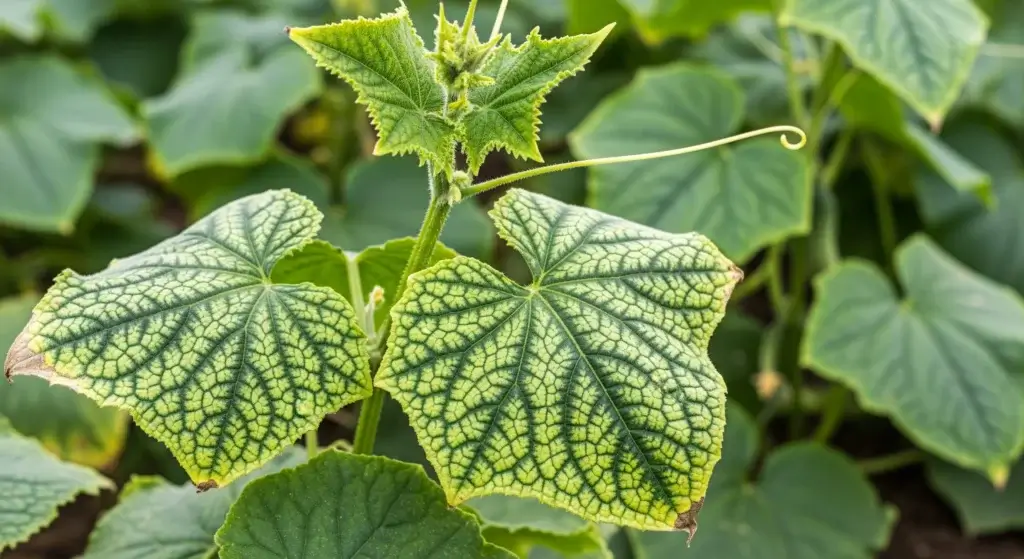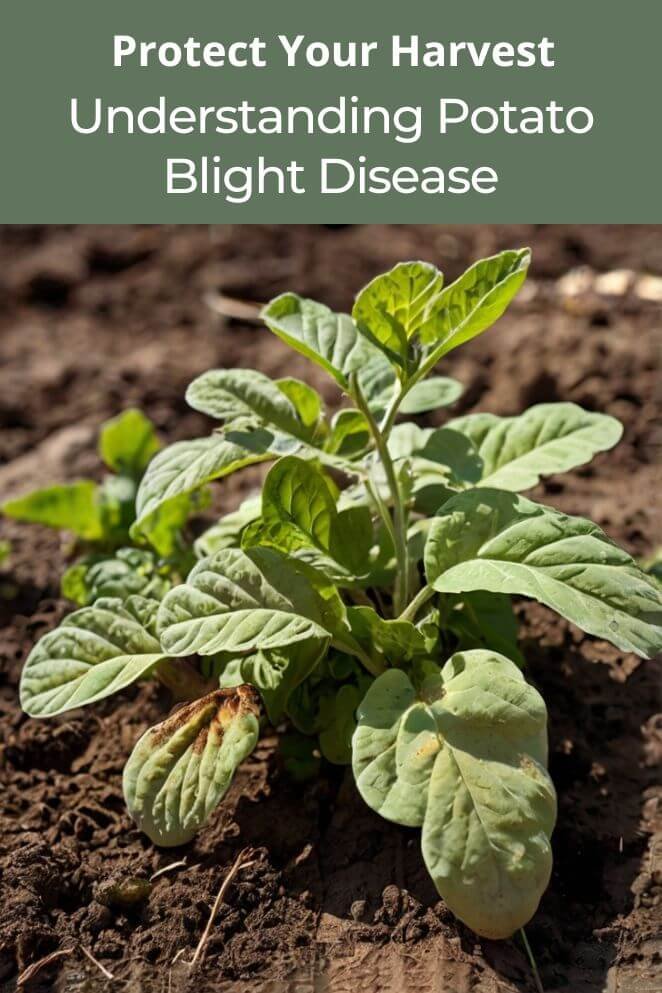
Potato blight is a serious disease that affects potato crops worldwide, causing significant yield losses.
Whether you’re a commercial farmer or a home gardener, understanding potato blight and how to manage it is crucial.
In this guide, we will explore the different types of potato blight, their causes, symptoms, and effective prevention and control measures to help you keep your potato plants healthy and productive.
Types of Potato Blight
Potato blight is a serious issue for potato growers and comes in two main types: early blight and late blight. Here’s a closer look at each:
Early blight
This type of blight is caused by a fungus called Alternaria solani. It tends to show up during warm, wet weather.
Early blight usually starts on the lower leaves of potato plants.
You might notice dark spots with yellow halos around them.
As the disease progresses, it can spread to the stems and even the tubers (the potatoes themselves).
This results in reduced yields and lower quality potatoes.
- Read also: Effective Strategies on How to Prevent Potato Beetles
- Read also: The Ultimate Foe: Common Potato Pests and How to Defeat Them
Late blight
Late blight is caused by a different pathogen, an oomycete called Phytophthora infestans.
This type is particularly notorious because it spreads quickly and can cause severe damage.
It thrives in cool, moist conditions and often hits hard during wet weather.
Symptoms include large, irregularly shaped dark spots on leaves and stems, which can quickly turn into a mushy, rot-like appearance.
Late blight can spread rapidly and destroy entire potato crops if not managed effectively.

Causes and Conditions that Favor Blight Development
Potato blight thrives under certain environmental conditions.
Understanding these factors can help you manage and prevent the disease more effectively.
Temperature
- Early blight: This type of blight favors warm temperatures, typically between 24-29°C (75-85°F). If the weather is consistently in this range, early blight is more likely to develop.
- Late blight: In contrast, late blight prefers cooler temperatures, around 10-20°C (50-68°F). If the weather is cooler and moist, late blight is more likely to spread.
Humidity
Both types of blight love high humidity and prolonged wet conditions.
If the leaves of your potato plants stay wet for long periods, it creates a perfect environment for blight to grow.
This can happen after heavy rain or in areas with high moisture levels.
Poor air circulation
Dense planting can restrict airflow around your potato plants.
When there’s not enough air movement, moisture tends to linger on the leaves and stems.
This constant moisture helps blight to develop and spread more easily.
Ensuring good spacing between plants can help improve air circulation and reduce the risk of blight.
Potato Blight Symptoms
Recognizing the symptoms of potato blight early can help you take swift action to control the disease.
Early symptoms of early blight
- Small, dark brown spots on older leaves, often with concentric rings.
- Yellowing of leaves around the spots.
- Dry, leathery lesions on stems and tubers.
Early symptoms of late blight
- Water-soaked lesions on leaves and stems that quickly turn dark brown or black.
- White, fluffy growth on the undersides of leaves in humid conditions.
- Brown, rotting areas on tubers with a characteristic foul smell.
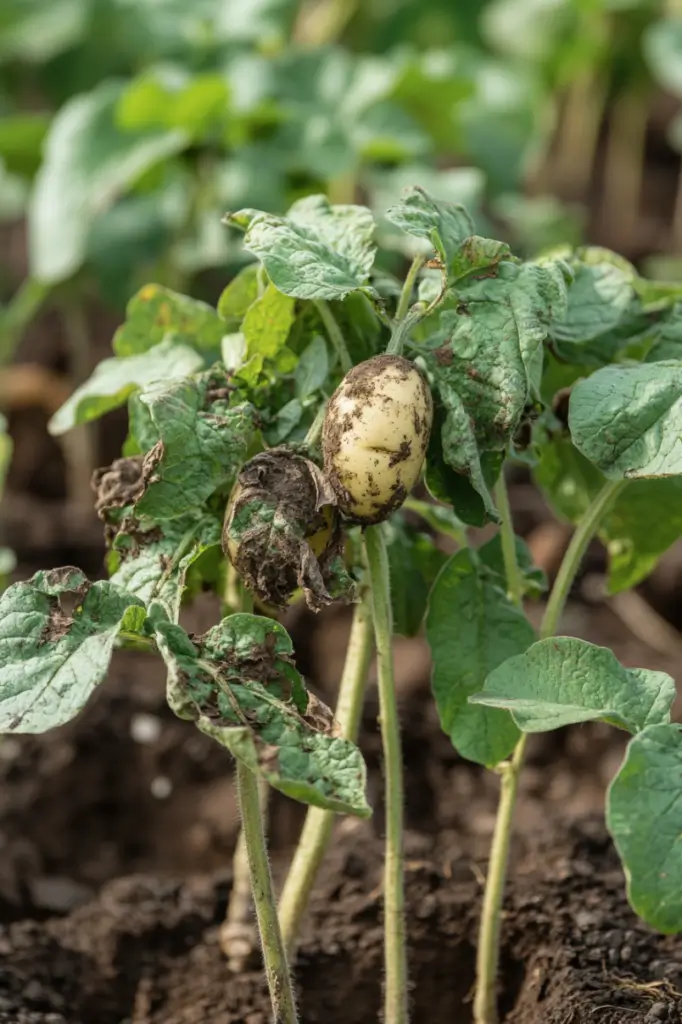
Prevention and Control Measures
Preventing potato blight involves a combination of cultural practices, resistant varieties, and chemical or organic treatments.
Crop rotation and field sanitation
- Crop rotation: Changing what you plant in your potato field each year helps reduce the buildup of blight pathogens in the soil.
- Field sanitation: Keep your field clean by removing and destroying any leftover plant debris and volunteer potatoes (potatoes that grow from missed tubers).
Resistant potato varieties
Some potato varieties are bred to be resistant to blight.
Planting these can greatly lower the chance of blight affecting your crop.
Varieties such as ‘Sarpo Mira’, ‘Valor’, and ‘Cara’ are known for their resistance to late blight.
Proper planting and spacing
- Spacing: Make sure to plant your potatoes with enough space between each plant (about 12-15 inches).
- Depth: Plant your potatoes at the recommended depth to avoid exposing the tubers to potential infections.
Importance of good drainage
- Soil drainage: Use well-drained soil to avoid waterlogging, which can encourage blight development.
- Raised beds: In areas with heavy or poorly draining soils, consider using raised beds. This helps improve drainage and reduces the risk of blight.
Role of Fertilizers and Soil Health
- Balanced fertilization: Use balanced fertilizers to keep your plants healthy and strong. Healthy plants are better equipped to fend off diseases.
- Soil amendments: Enhance soil health by adding organic matter like compost. This helps improve plant resilience and overall soil condition.
Chemical Control Options (Fungicides)
Fungicides can be effective in preventing and controlling blight:
- Protective fungicides: Apply fungicides like chlorothalonil or mancozeb before conditions become favorable for blight.
- Systemic fungicides: For ongoing protection, use systemic fungicides like metalaxyl. These are absorbed by the plant and provide long-term defense.
Organic Control Methods
Organic methods can also help manage blight:
- Biocontrol agents: Consider using biocontrol agents, such as Trichoderma species, which help suppress blight pathogens naturally.
- Plant extracts: Natural fungicides like neem oil or garlic oil can also be effective in managing blight.
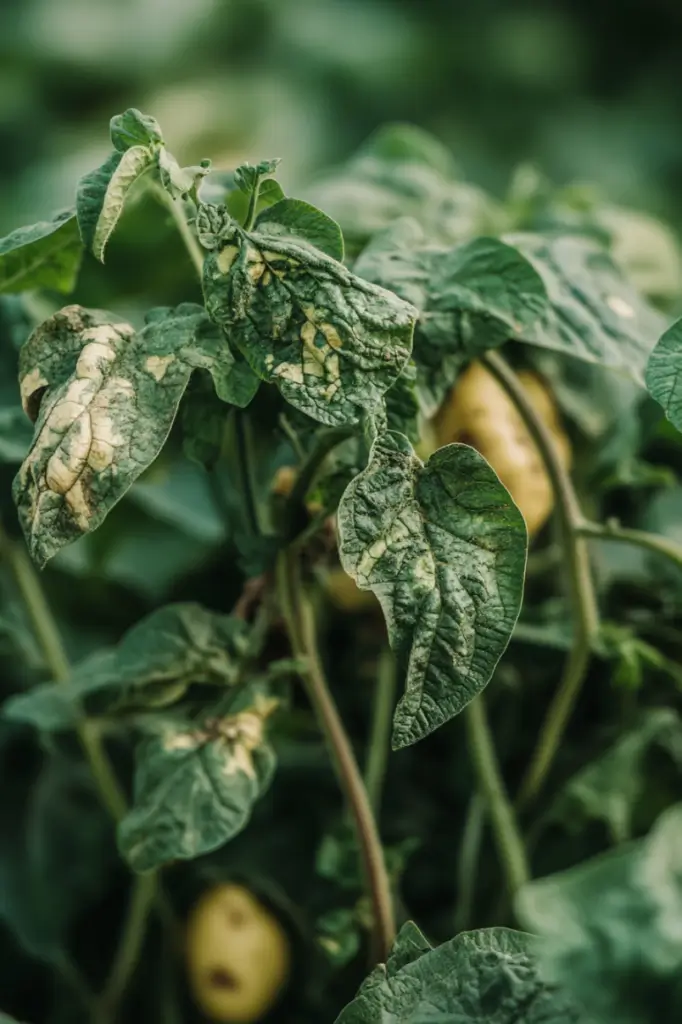
Managing Potato Blight Outbreak
If you spot potato blight in your garden, it’s crucial to act quickly to manage the outbreak and prevent further damage.
Here’s a step-by-step guide on how to handle the situation:
Immediate actions
- Isolate affected plants: Start by removing any plants that show signs of blight. This helps stop the disease from spreading to other plants.
- Disinfect tools: After working with infected plants, clean and disinfect your gardening tools. This helps prevent the blight from spreading to healthy plants through contaminated tools.
Emergency control measures
- Chemical treatments: Use recommended fungicides. These fungicides are designed to stop the disease from spreading and can help protect any remaining healthy plants.
- Environmental adjustments: Improve airflow around your plants by pruning nearby vegetation and spacing your plants further apart.
Protecting healthy plants
- Barrier sprays: Apply barrier sprays to create a protective layer on healthy plants. This can help prevent them from getting infected.
- Preventive measures: Keep up with regular fungicide applications and stay vigilant for any signs of blight.
Harvesting and storing potatoes safely
- Harvest timing: Harvest your potatoes as soon as possible to avoid prolonged exposure to blight conditions. Early harvesting can help minimize the impact of the disease.
- Curing and storage: After harvesting, cure your potatoes in a cool, dry place. This helps them to harden off and reduce the risk of rot.
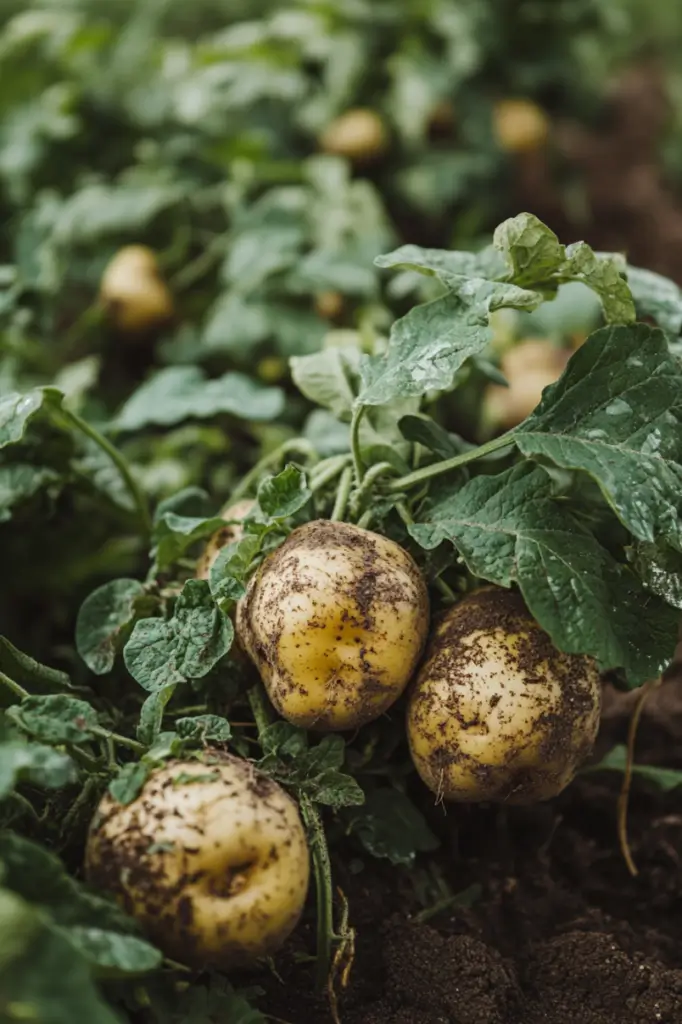
- Read also: Beat the Blight: Identifying Fungal Diseases of Eggplant
- Read also: Cucumber Killers: Common Fungal Diseases of Cucumber
Conclusion
Potato blight is a formidable foe, but with proper knowledge and management strategies, you can protect your crop and ensure a successful harvest.
By implementing preventive measures, using resistant varieties, and taking swift action when blight is detected, you can minimize the impact of this disease and enjoy healthy, productive potato plants.

